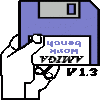I have made a scrolling function on my canvas that lets the user click and drag their view point.
Currently it moves with raw mouse movement. But I wanted to know what are common techniques people use to apply a smoother feel to it.
My current function looks like this:
Javascript:
function drag(evt,el){
if(evt.button == 2){
mousePos = {};
mousePos.x = evt.offsetX / scale;
mousePos.y = evt.offsetY / scale;
function update(e){
var difx = mousePos.x - (e.offsetX/scale),
dify = mousePos.y - (e.offsetY/scale);
camera.x += difx;
camera.y += dify;
mousePos.x = e.offsetX / scale;
mousePos.y = e.offsetY / scale;
}
function clear(){
el.removeEventListener('mousemove', update, false);
this.removeEventListener('mouseup', clear, false);
}
el.addEventListener('mousemove',update,false);
document.body.addEventListener('mouseup',clear,false);
}
}
element.addEventListener('mousedown', function(e) { drag(e,this);}, false);I have added a jsFiddle of this function working too http://jsfiddle.net/jmnte8cL/
So, what are common simple ways to smooth out the scrolling so it feels a bit less dry that are commonly used in games?



